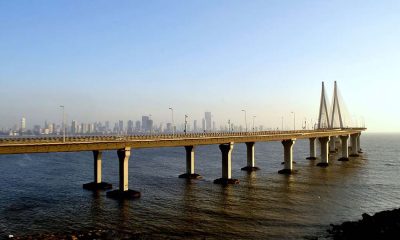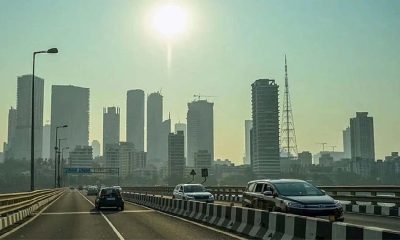Business
With new lifetime highs expect heightened volatility
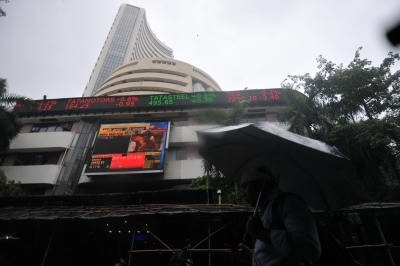
Friday the 16th of June was a red-letter day for the markets in India as they made new lifetime closing highs on both the BSESENSEX and NIFTY. While the closing highs have been made, we still need about 200 points on BSESENSEX and 60 points on NIFTY to beat the intraday highs. This is a small number and could happen on just the next positive day that markets witness. Normally these happen within a day or two of the closing highs whether before or after.
BSESENSEX gained 758.95 points or 1.21 per cent to close at 63,384.58 points while NIFTY gained 262.60 points or 1.41 per cent to close at 18,826.00 points. The broader markets saw BSE100, BSE200 and BSE500 gain 1.65 per cent, 1.78 per cent and 1.88 per cent respectively. BSEMIDCAP gained 2.95 per cent and closed at 28,331.32 points. Similarly, BSESMALLCAP gained 2.87 per cent and closed at 32,293.19 points.
The two MIDCAP and Smallcap sectors have been outperformers and have gained 21.1 per cent and 23.5 per cent from the lows made in March 2023. Against this the rise in BSESENSEX has been 11 per cent and 11.87 per cent in NIFTY respectively. Our markets gained on four of the five trading sessions and lost on one.
The Indian Rupee gained 53 paisa or 0.64 per cent to close at Rs 81.93 to the US Dollar. The US FED in its policy meeting decided to keep interest rates unchanged in a band of 5-5.25 per cent. Dow Jones during the week gained on three of the five sessions and was up 422.34 points or 1.25 per cent to close at 34,299.12 points.
In primary market news, shares of Ikio Lighting Limited listed on the bourses on Friday (June 16). The company had tapped the capital markets with its fresh issue for Rs 350 crore and an offer for sale of 90 lakh shares in a price band of Rs 270-285. Shares listed at Rs 391 on BSE and Rs 392.50 on NSE. They closed day one at Rs 403.75, a gain of Rs 118.75 or 41.67 per cent on BSE and at Rs 403.85, a gain of Rs 118.85 or 41.70 per cent on NSE.
The week ahead sees one IPO tap the capital markets. HMA Agro Industries Limited is tapping the capital markets with its fresh issue of Rs 150 crore and an offer for sale of Rs 330 crore in a price band of Rs 555-585. The issue opens on Tuesday (June 20) and closes on Friday (June 23). The issue would raise Rs 480 crore.
HMA Agro Processors is one of India’s largest buffalo meat processors and exporter. The company has also started exporting basmati rice and frozen fish. The company has six plants spread across the Northern and Western part of India with the Haryana plant recently set up being the largest capacity and most modern processing plant anywhere in South East Asia. The plant has a capacity of 570 tons per day.
The entire product of the company is exported to over 40 countries globally. It markets its products under its own brand name. The company HMA Agro exports over 10 per cent of India’s buffalo meat exports and is currently one of the top three largest exporters doing so. The company enjoys a decent reputation amongst its customers and being a food item is highly regulated by both the exporting country and the importing country.
The idea of entering rice and fisheries is to extend the food basket and also as the buyer is the same. The company sells to wholesalers and is a B-to-B player. Further India’s exports of Rice and Buffalo meat form the top and the second topmost item of export in the Agri basket.
The company reported revenues of Rs 3,083 crore for the year ended March 2022 and a net profit of Rs 117.62 crore for the same year. The EPS for the 12 months is Rs 24.39. For the nine months ended December 2022, the company reported revenues of Rs 2,370 crore and a profit after tax of Rs 113.24 crore. The EPS on a non-annualised basis is Rs 22.96.
The Haryana plant which would effectively double the capacity of the company has started commercial operations since January 23 and the current year 23-24 would be the first full operation of the company. The PE band of the issue based on the 12 months, March 22 number is 22.76-23.99. If one were to annualise the nine months earnings for the period ended December 22, the EPS would be Rs 30.6. The resultant PE band would be 18.13-19.1.
There are two upsides that an investor putting his money in HMA Agro Industries is betting on. The first is the growth in the business with the company doubling its capacity from 2 lakh tons to 4 lakh tons. The biggest is the price differential between the price at which India exports its meat to the world and the international price of wheat earned by countries like Brazil and Australia. The difference is huge with India setting the floor at $2.85 per kg and Brazil at $4.45 per kg. The US is at a much higher $7.06. If the gap is narrowed it will increase the profitability significantly.
The company offers an investment into the meat segment which is a 100 per cent export item and highly regulated by the animal husbandry department. It offers decent returns for investors.
The FPO from Adani Enterprises and the fallout of the Hindenburg report are now over four months old. A lot of water has flown under the bridge and prices have moved. Adani Enterprises had fallen from Rs 3,500 to Rs 1,017 and are now around Rs 2,500. Significant opportunity for smart investors to make money. One thing to remember is that 3/4th of Adani’s businesses have sectoral regulators.
In an interesting milestone, MRF has become the first company in India to have its share price touch the one lakh mark. Its share price touched the 1 lakh mark for the first time on Tuesday (June 13) and closed at Rs 99,980.35 on Friday on the BSE. The market cap of the company is Rs 42,403 crore.
Markets have made their lifetime closing highs and would also do so on an intraday basis shortly. What next? There is a 3 per cent spill over which naturally and normally does happen. This would mean about 2,000 points on the BSESENSEX and 600 points on NIFTY. Markets would tend to be volatile with sharp intraday moves in both directions. The midcap and Smallcap space which have been outperformers would continue to rule the roost. The strategy for the week ahead would be to play in the midcap and Smallcap space and watch out for any signs of reversal. Even corrections at such stages in the market are swift. There would also be a retest of market highs once there is a reversal at the top. In short, elevated levels and unchartered territory is the reason for wild movement. Trade cautiously.
Business
Gold, silver tumble as hopes of December Fed Rate cut fade
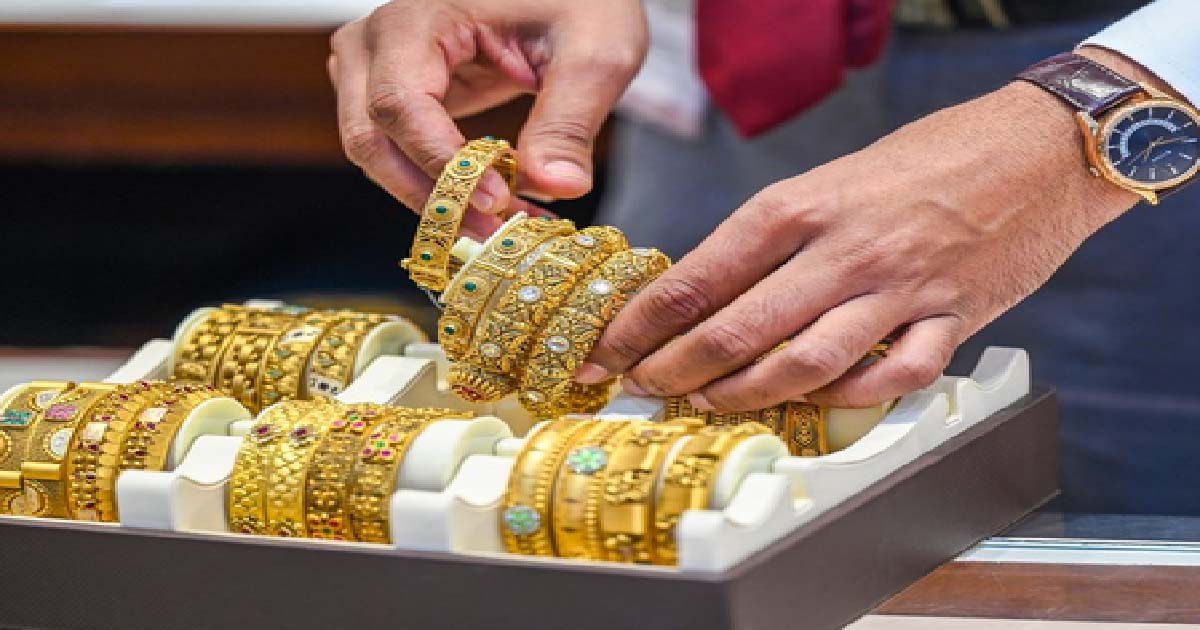
Mumbai, Nov 18: Gold and silver prices dropped sharply in the domestic futures market on Tuesday morning as hopes of a US Federal Reserve rate cut in December faded and concerns over US tariffs eased.
This reduced the appeal of safe-haven assets like bullion. At early trade, MCX Gold December futures were trading 1.19 per cent lower at Rs 1,21,466 per 10 grams.
MCX Silver December contracts also declined 1.65 per cent to Rs 1,52,750 per kg.
“Gold has support at $4000-3965 while resistance at $4075-4110. Silver has support at $49.70-49.45 while resistance is at $50.75-51.10,” market watchers said.
“In INR gold has support at Rs1,22,350-1,21,780 while resistance at Rs1,23,750-1,24,500. Silver has support at Rs1,53,850-1,52,100 while resistance at Rs1,56,540, 1,57,280,” they added.
Internationally, gold prices slipped for the fourth straight session on Tuesday.
A stronger US dollar and weakening expectations of a rate cut next month continued to weigh on the metal.
The dollar index rose to 99.59, making gold more expensive for buyers using other currencies.
Gold, which is priced in US dollars, becomes costlier when the greenback strengthens, resulting in reduced demand.
The recent US government shutdown, which lasted a record 43 days, had delayed the release of important economic data, creating uncertainty about the condition of the world’s largest economy.
With the shutdown now over, attention has shifted to key data releases expected this week, including the September nonfarm payrolls report on Thursday.
These numbers will play a major role in shaping expectations around the US Federal Reserve’s next move on interest rates.
Meanwhile, Fed officials continue to send mixed signals on the future path of monetary policy, adding further uncertainty to the market.
With no major positive fundamental triggers in recent days, bulls remain hesitant—especially with both metals still trading at historically high levels.
“Traders now await a fresh round of US economic data later this week. Meanwhile, a firmer US Dollar Index and slightly higher 10-year Treasury yields added pressure to precious metals,” analysts said.
Business
Sensex, Nifty open lower on weak global cues
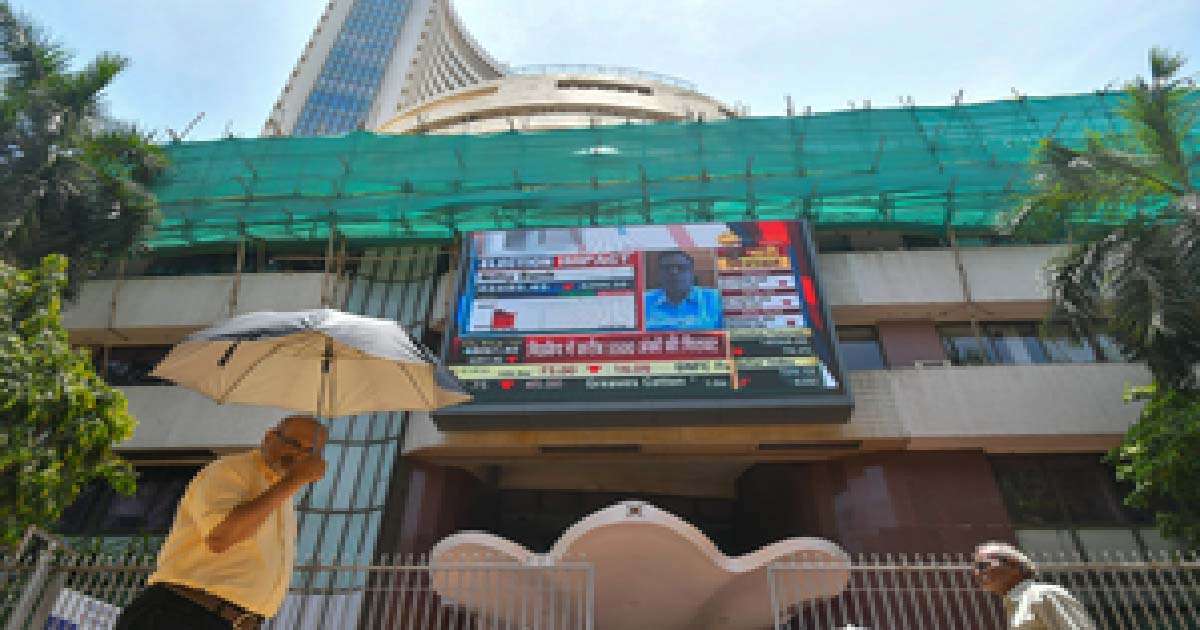
Mumbai, Nov 18: Indian stock markets opened lower on Tuesday as weak global cues weighed on investor sentiment. Both benchmark indices slipped 0.2 per cent at the opening bell.
The Sensex dropped 195 points to trade at 84,756 in early deals, while the Nifty fell 64 points to 25,949. Most heavyweight stocks were under pressure, dragging the indices down.
“Immediate resistance now lies at 26,100, followed by 26,150, while the 25,850–25,900 band is likely to offer meaningful support and serve as an accumulation zone for positional traders,” market experts said.
“These levels will remain crucial as the index navigates early weakness,” experts noted.
Tata Steel, Bajaj Finance, Bajaj Finserv, Kotak Mahindra Bank, Larsen & Toubro, Mahindra & Mahindra, Tech Mahindra, HCL Tech, Sun Pharma and Titan were among the major laggards, declining between 0.5 per cent and 1 per cent.
However, a few stocks managed to stay in positive territory. Bharat Electronics, Bharti Airtel, Axis Bank, Eternal and State Bank of India were the only gainers on the Sensex, rising up to 0.5 per cent.
Broader markets also opened weak, with the Nifty MidCap index slipping 0.25 per cent and the Nifty SmallCap index falling 0.40 per cent.
Among sectoral indices, Nifty PSU Bank was the only one to trade higher, gaining 0.25 per cent. On the other hand, Nifty Realty and Nifty Metal dropped 0.8 per cent each, while the Nifty IT index fell 0.5 per cent.
The Bank Nifty mirrored the broader market’s resilience, reflecting renewed buying momentum.
“Strong support is identified at 58,600, and a breakdown below this mark may trigger a modest decline toward 58,800,” market watchers mentioned.
“On the upside, resistance at 59,100 remains a key barrier, and a sustained breakout above this level may open the path toward 59,300, indicating potential continuation of the bullish trend,” experts stated.
Business
Indian PSU oil companies secure ‘historic’ deal to import 2.2 MTPA LPG from US: Puri
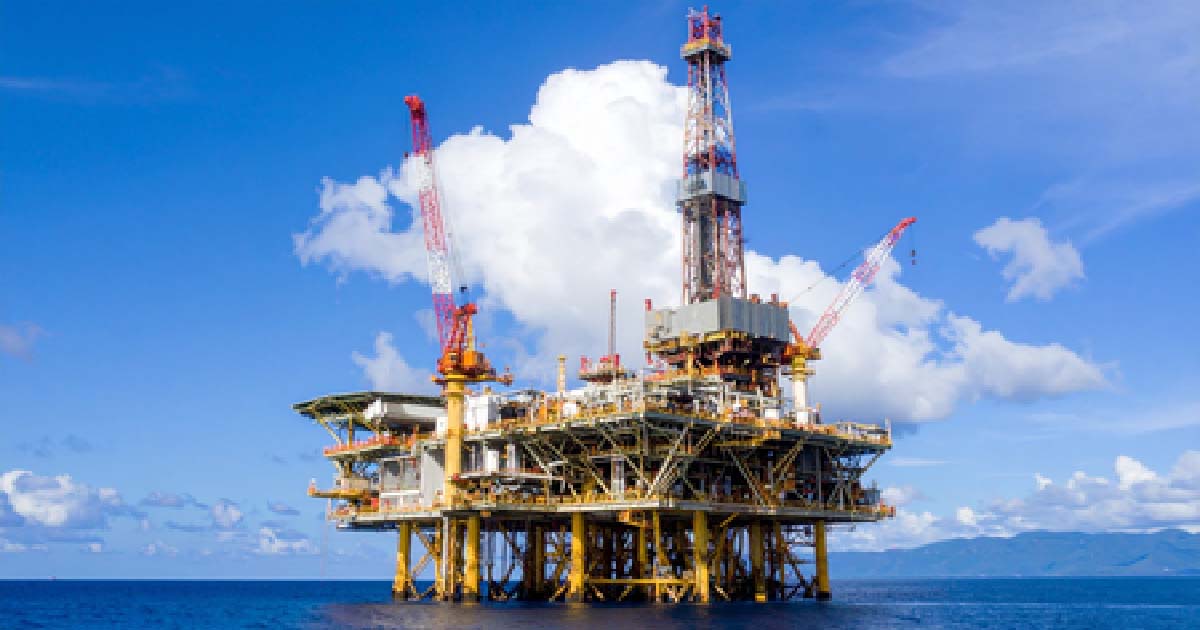
New Delhi, Nov 17: In a key development, Indian public sector oil companies have finalised a deal for imports of around 2.2 million tonnes per annum (MTPA) LPG for the contract year 2026, to be sourced from the US Gulf Coast, Petroleum and Natural Gas Minister Hardeep Singh Puri said on Monday.
In a post on X social media platform, he said that in a historic first, “one of the largest and the world’s fastest growing LPG market opens up to the United States”.
“In our endeavour to provide secure affordable supplies of LPG to the people of India, we have been diversifying our LPG sourcing,” the minister said.
“In a significant development, Indian PSU oil companies have successfully concluded a 1-year-deal for imports of around 2.2 MTPA LPG, close to 10 per cent of our annual imports – for the contract year 2026, to be sourced from the US Gulf Coast – the first structured contract of US LPG for the Indian market,” Puri informed.
This purchase is based on using Mount Belvieu as the benchmark for LPG purchases and “a team of our officials from Indian Oil, BPCL and HPCl had visited the US and engaged in discussions with major US producers over the last few months, which have been concluded now”.
Under the leadership of PM Modi, PSU oil companies have been providing LPG at the lowest global prices to all our mothers and sisters.
“Even as global prices soared by over 60 per cent last year, PM Modi ensured that our Ujjwala consumers continued to receive LPG cylinder at just Rs 500-550 whereas the actual cost of the cylinder was over Rs 1,100,” said the minister,
The Government of India incurred the cost of over Rs 40,000 crore last year “in order to ensure our mothers and sisters did not feel the burden of rising international LPG prices”, he mentioned.
-

 Crime3 years ago
Crime3 years agoClass 10 student jumps to death in Jaipur
-

 Maharashtra1 year ago
Maharashtra1 year agoMumbai Local Train Update: Central Railway’s New Timetable Comes Into Effect; Check Full List Of Revised Timings & Stations
-

 Maharashtra1 year ago
Maharashtra1 year agoMumbai To Go Toll-Free Tonight! Maharashtra Govt Announces Complete Toll Waiver For Light Motor Vehicles At All 5 Entry Points Of City
-

 Maharashtra1 year ago
Maharashtra1 year agoFalse photo of Imtiaz Jaleel’s rally, exposing the fooling conspiracy
-

 National News1 year ago
National News1 year agoMinistry of Railways rolls out Special Drive 4.0 with focus on digitisation, cleanliness, inclusiveness and grievance redressal
-

 Maharashtra1 year ago
Maharashtra1 year agoMaharashtra Elections 2024: Mumbai Metro & BEST Services Extended Till Midnight On Voting Day
-

 National News1 year ago
National News1 year agoJ&K: 4 Jawans Killed, 28 Injured After Bus Carrying BSF Personnel For Poll Duty Falls Into Gorge In Budgam; Terrifying Visuals Surface
-

 Crime1 year ago
Crime1 year agoBaba Siddique Murder: Mumbai Police Unable To Get Lawrence Bishnoi Custody Due To Home Ministry Order, Says Report





